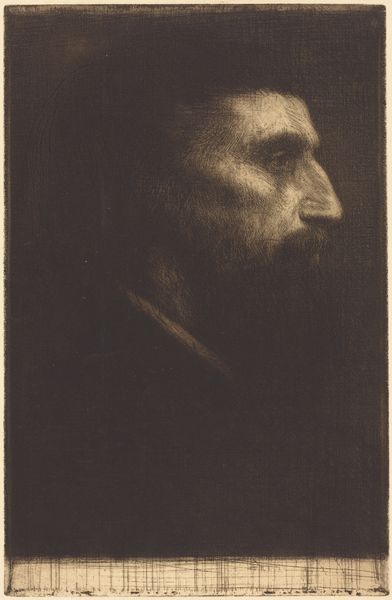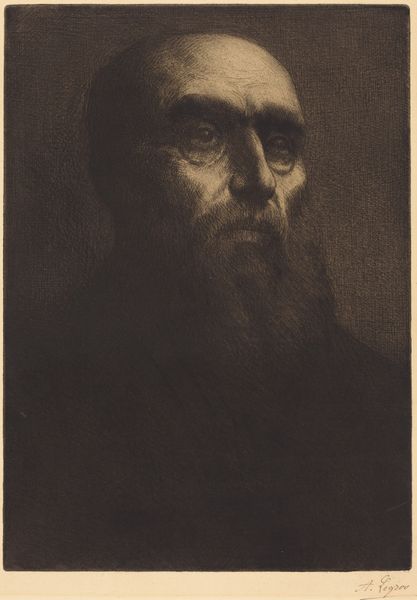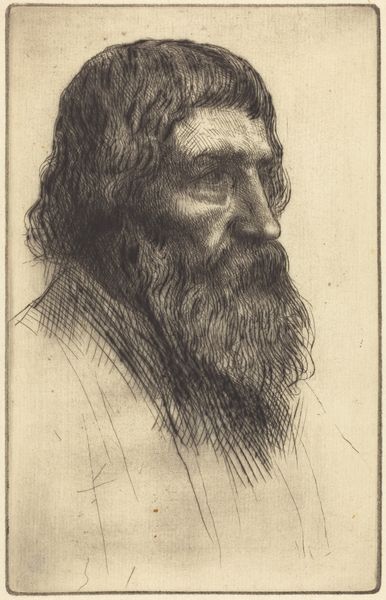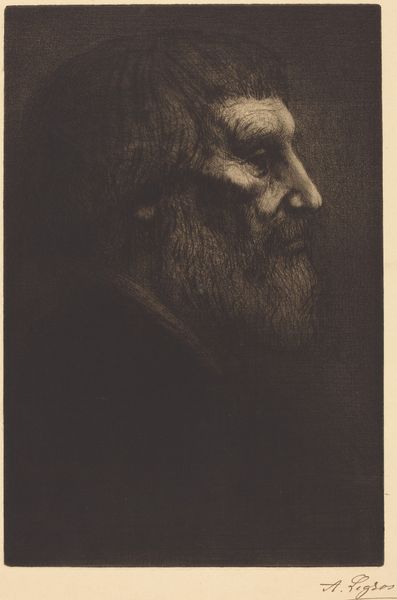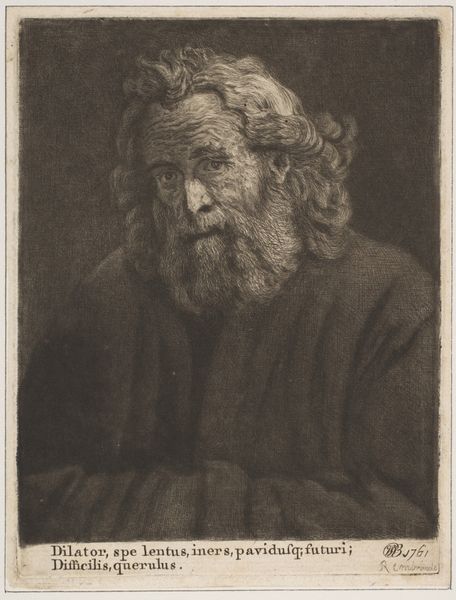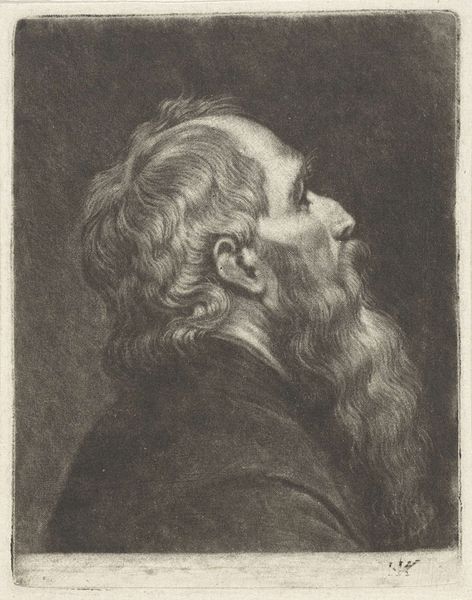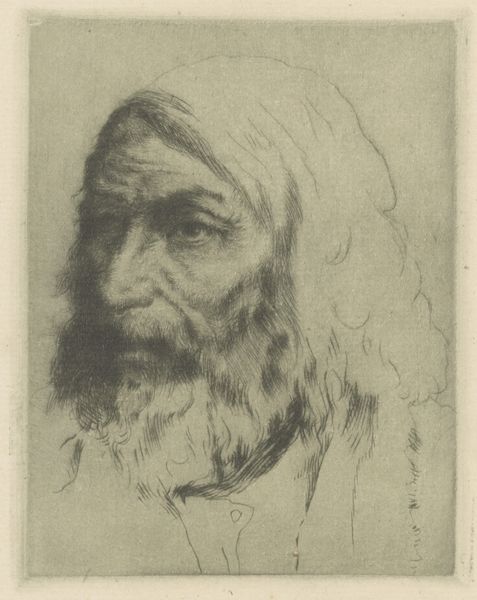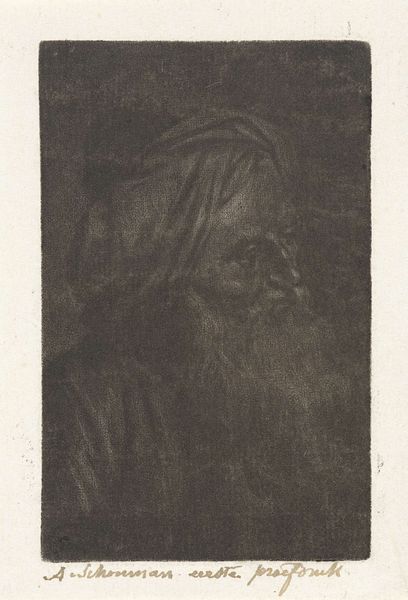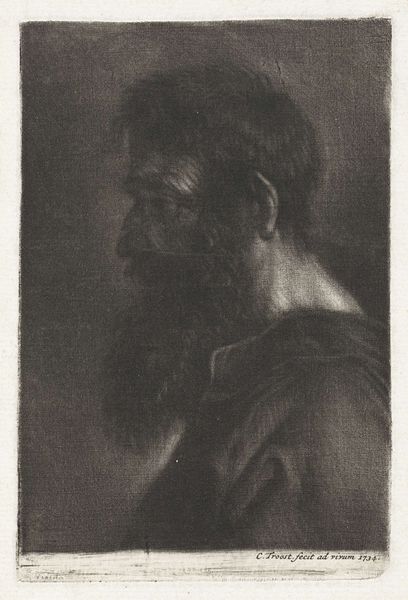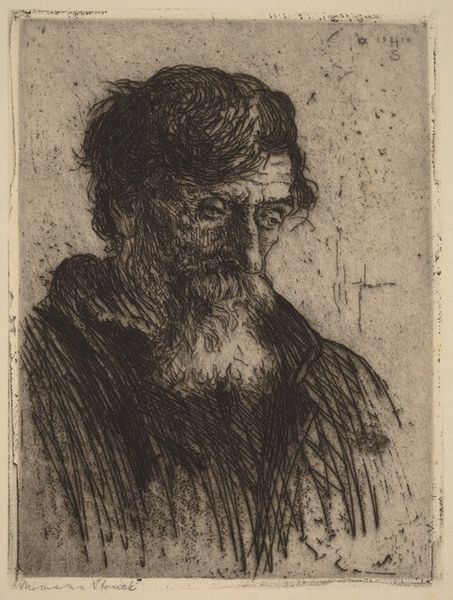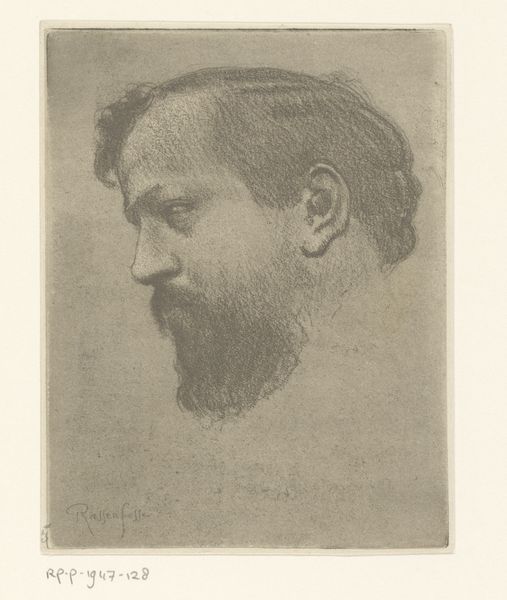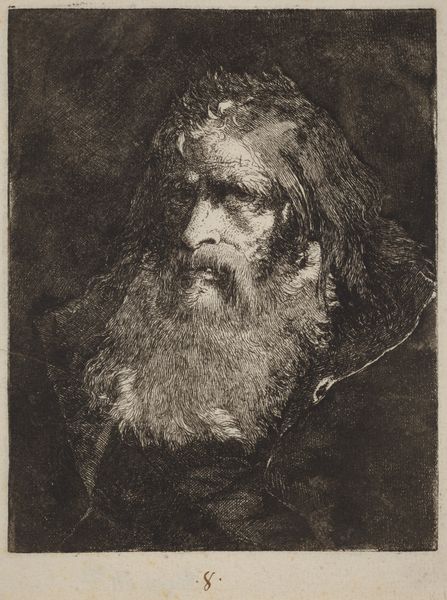
drawing, print
#
portrait
#
drawing
# print
#
historical photography
#
portrait drawing
#
realism
Copyright: National Gallery of Art: CC0 1.0
Curator: Here we have Alphonse Legros' "Poet," also known as "Le Poete," a portrait drawing that utilizes printmaking techniques. Editor: Gosh, that title just *nails* it, doesn’t it? The poor bloke just radiates world-weary introspection. I can practically smell the stale cigarettes and hear the mournful cello music he’s probably listening to. Curator: Legros, known for his dedication to realism and printmaking, produced this evocative work at a time when the role of the artist was being intensely debated within social and political discourse. This piece encapsulates the Romantic ideal of the suffering artist, grappling with profound emotions and social alienation. Editor: He does look rather put upon. Is it the lighting, or is there a hint of martyrdom about him? You know, the “I suffer for my art, you philistines!” kind of vibe? I feel a surge of sympathy…and a tiny urge to offer him a sandwich and a pep talk. Curator: It's important to remember the socio-economic anxieties of the late 19th century. Many artists felt marginalized and misunderstood. Legros used the portrait to examine themes of genius, melancholy, and the inherent struggles of creative expression within a rapidly changing world. Consider the power dynamics, who gets to be called a genius, and at whose expense. Editor: Oh, definitely a product of his time. Today, maybe our poet would be ranting on Twitter. Though the beard is timeless – every struggling creative grows one eventually, I swear! Still, that shadow-soaked face really makes me think about what burdens creatives carry, past and present. Curator: Indeed, the shadows here are quite striking. They accentuate the subject's somber mood and allow the artist to express deeper issues, which encourage discussions of authorship, artistic production, and cultural marginalization within the art world. Editor: Okay, now that’s something to write poetry about. Curator: Through “Poet”, Legros provides us with an insight into art and suffering that has historical roots which remain ever-relevant. Editor: Absolutely. Even with all the cultural baggage, there's still a vulnerable core shining through – a raw human element we can all relate to, whether we're poets or not.
Comments
No comments
Be the first to comment and join the conversation on the ultimate creative platform.
